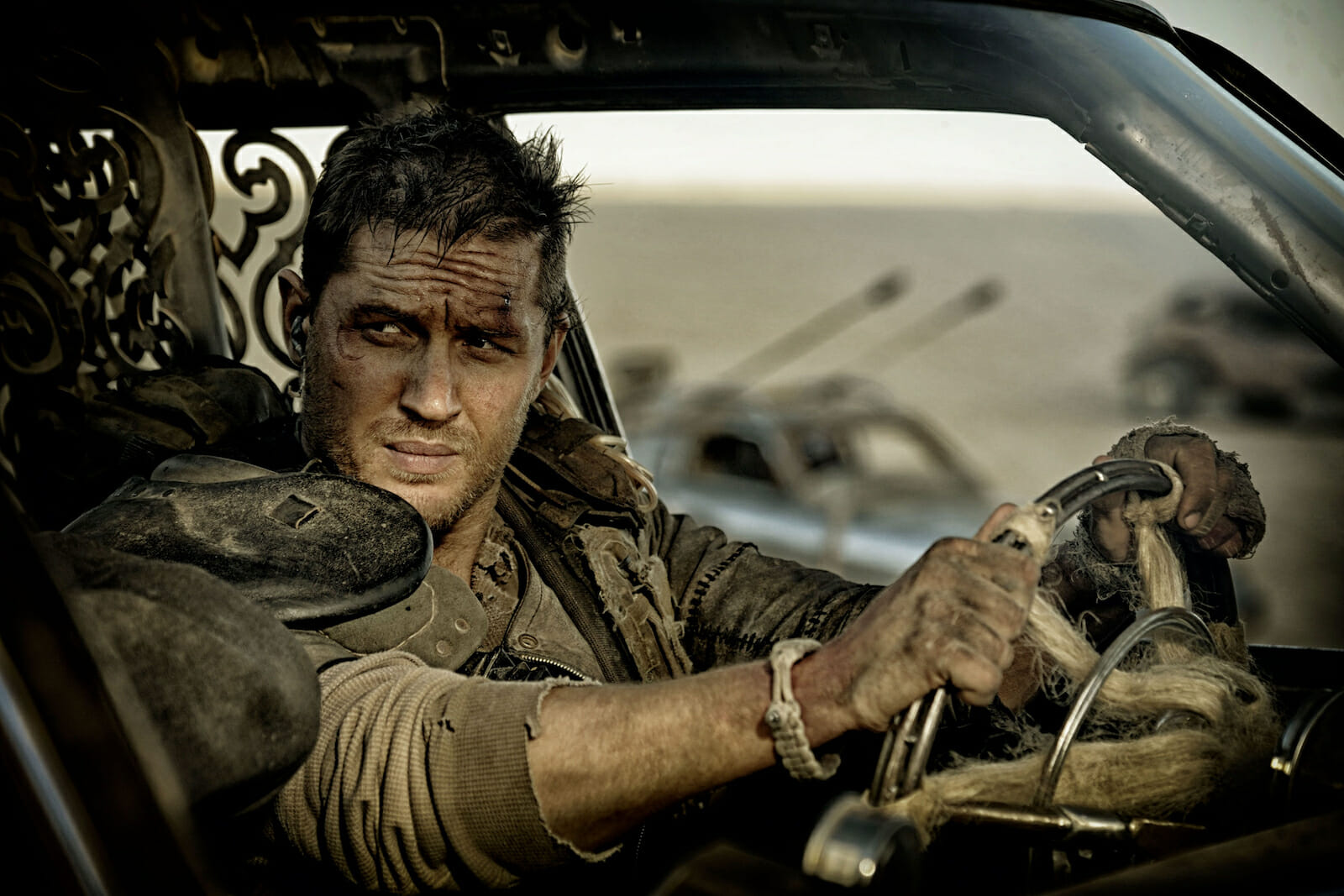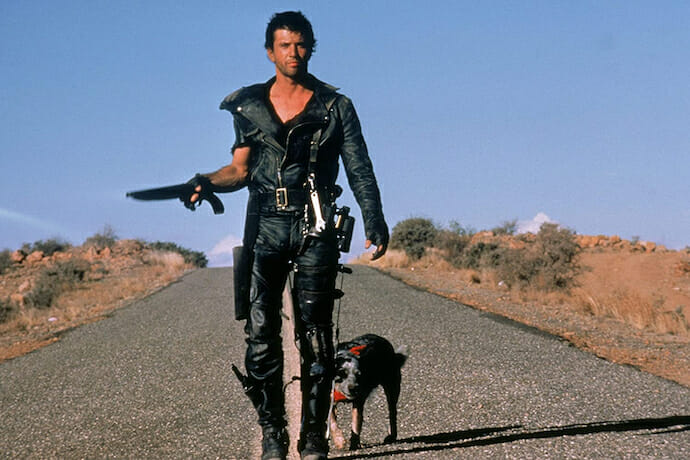
Did We Overpraise ‘Mad Max: Fury Road’?
I was in a graduate classroom in Fairfax, VA four years ago. A guy who supposedly taught film at a nearby high school was bragging about showing his students Mad Max: Fury Road. He was going on and on about how much his students were into it, how much it meant to him to share this movie, and to have shown it to his students in such a critical sort of way.
“But what about the other 3 Mad Max movies?” I asked him. “You know, the Mel Gibson ones?”
“Oh,” he responded. “I haven’t seen any of those.”
***
ScreenCrush defines a “legacyquel” as “movies all about revitalizing old franchises through the notion of legacy.” Usually, this involves older characters from previous movies passing the baton to a new generation while getting a respectful send-off of their own. But I would argue that any sequel to any franchise made years, even decades afterward, could be considered a legacyquel, because they are just as concerned with the dynamics of their specific franchises as they are with crafting new stories to fit within them.
Sure, legacyquels had come and gone before. (TRON: Legacy, Wall Street 2 and the fourth Indiana Jones movies all spring to mind.) But in 2015, four long-awaited “legacyquels” hit the big screen. The year’s biggest movie was Star Wars: The Force Awakens, the seventh installment in the venerated franchise, which broke box office records and most people seemed to agree was entertaining, if not a little derivative of previous installments. Another noteworthy legacyquel was Jurassic World, which brought the Jurassic Park franchise into new territory by promising to actually open the titular theme park up. Additionally, Creed, a spin-off of the Rocky series, earned Sylvester Stallone an Oscar nod and many critics (myself included) seemed to love, even while conceding that it repeated some of the same plot-points that made the 1976 original Rocky movie such a classic. But there’s one that so completely dominated the discussion, and was praised as not only being on the same par as its predecessors but arguably better than them. This was, of course, George Miller’s Mad Max: Fury Road.
Now that the fifth anniversary of the release of Mad Max: Fury Road has just recently come and gone, I find myself beginning to look at the film a little bit differently than I used to. When it was released, it was celebrated as a groundbreaking masterpiece, the rare blockbuster with not only technical ambition but a creative, engaging storyline to go along with it. Director George Miller was praised for what he brought to the film, a long-delayed follow-up to his Mad Max trilogy. Word of mouth continued to spread, culminating in the film being nominated for 10 Academy Award nominations, including Best Picture and Best Director for Miller. The film ultimately won 6 Oscars, all in technical categories.
I was as enthusiastic as everyone else was about the film. It was my favorite movie of 2015, a year that certainly had an abundance of great movies. It was thrilling, it was engaging, it championed a surprisingly feminist message for a mainstream blockbuster (particularly one from a franchise typically thought of as male-escapist-fantasy the way Mad Max was). I would gush about the film to friends (and convinced one of them to go see it again with me), I was a part of discussions about it online, and I championed the film getting Oscar nominations.
Mad Max: Fury Road certainly is a great movie. I will not challenge that, nor deny that. It is one of my favorite movies of recent years, and one I would recommend to almost anyone.
But here’s the thing: it’s not even my favorite Mad Max movie.
That honor goes to Fury Road’s predecessor, and second overall film in the franchise, Mad Max 2: The Road Warrior. Released in 1981, The Road Warrior is one of the better examples of genre filmmaking in the late-70s/early-80s, a time already teeming with talents such as Spielberg and Lucas, John Carpenter and Ridley Scott. Better yet, it was a breakout hit from Australia, a country where very few films seem to capture the American zeitgeist. Even better than that, I would argue, is that it is a singular improvement on its predecessor, the uneven and overrated Mad Max (1979). While the original Mad Max depicts a world on the edge of an apocalypse and gives Max a motivation for being the way he is, everything you associate with the franchise begins in The Road Warrior.
This is because The Road Warrior set up what is the template for every Mad Max movie that followed, including Fury Road: The setting is very clearly after the apocalypse; Max evolving into a Man With No Name-Esque traveling anti-hero; Max encountering both allies and enemies in the Wasteland; a climax of action and stunts that truly feels like the story’s crescendo. The typical Mad Max-movie formula begins, not with the first film, but with The Road Warrior: Max, through happenstance, stumbles on a community that is struggling to survive in the Wasteland due to either interior or exterior forces. A reluctant Max originally acts selfishly before realizing the value of his new allies. After an “all is lost” moment, Max and friends participate in a bombastic climax that sees his allies achieve some sort of victory (even if feels bittersweet), while Max leaves to go have further adventures. Yes, all other movies in this franchise, including and especially Fury Road, adhere to this format.

The Road Warrior still remains the high-water-mark of the franchise, full of memorable moments and great, intense action. Mel Gibson gives a franchise-best performance (yes, that includes you too, Tom Hardy) that alerted a lot of American moviegoers to his talent for the first time. In 5 short years, he would be headlining Lethal Weapon alongside Danny Glover.
The villain of The Road Warrior, Lord Humongous (Kjell Nilsson), is one for the ages. He oozes charisma, with an announcement upon his arrival declaring him to be “the Warrior of the Wasteland” and “the Ayatollah of Rock n’ Roll-ah” even before we’ve been properly introduced to him. I can’t think of many other villains who seem to prefer to avoid violence, even going as far to say that he will spare the lives of our heroes if they leave behind their oil and their compound. But at the same time, he is as ruthless a villain as the series ever had, and one that Max is forced to battle directly. Everything from his strange accent to the things he says (“You disobey me! You puppy!”) to his iconic metal mask makes him stick out. And yes, he is far-and-away more menacing and intriguing than Fury Road’s fairly one-note villain, Immortan Joe (Hugh Keays-Byrne), who is defined by little more than his lust for both power and control, his cult of personality, and his rampant misogyny and sexism.
In terms of world-building, Fury Road is arguably even less creative than its direct predecessor, Mad Max: Beyond Thunderdome (1985). While Beyond Thunderdome might be the weakest installment besides the first one, it is a very different, imaginative film than its two predecessors. For the first time, we see something truly starting to resemble civilization begin to emerge in the form of Bartertown, the film’s primary location, a small but thriving community run by Aunty Entity (Tina Turner). The film’s titular, iconic Thunderdome scene is legitimately riveting, there’s a reason it has been referenced by everyone from Tupac to Crow T. Robot (of Mystery Science Theater 3000) to Rick & Morty. And while Beyond Thunderdome tends to fall apart right around the time Max stumbles unto a pocket of civilization entirely populated by children, it was a unique vision whose world-building goes far above what other installments in the franchise did, including and especially Fury Road. Additionally, no piece of music in Fury Road can equal the amazingness of either of the songs Tina Turner performed for the film, “One of the Living” and “We Don’t Need Another Hero”.
But I imagine many people reacted so strongly and positively to Fury Road because of the film’s feminist themes, as best embodied by the character of Imperator Furiosa (Charlize Theron), the battle-hardened badass who risks everything to save women from being concubines to Immortan Joe. Yes, this is a welcome element, but for people who have seen the other films in the franchise, it is merely a continuation of themes that the franchise has always had on its mind to a certain extent. The Road Warrior is about the struggle for necessity. Beyond Thunderdome is about the first hints of the rule of law returning to society. Fury Road does focus on human rights and the rights of women, in particular, a very natural route for this franchise to take. Taken as a whole, the franchise is about how aspects of civilization gradually return to humanity after it has been destroyed. If you only watch only Fury Road, that thematic element could very easily go over one’s head.
Again, to be sure, Fury Road is an incredible achievement. But besides my anecdote that began this piece, I have seen other signs that Fury Road is now regarded as something akin to “the only Mad Max film worth seeing.” Popular film channels on YouTube have contributed to the declining reputation of the original Mad Max trilogy. RedLetterMedia went as far as to say that “as awesome as The Road Warrior is…Fury Road takes everything up a few notches.”
Celebrated video essayist Lindsey Ellis only spends a little over a minute covering The Road Warrior in one of her videos, and only then dismisses Max’s arc in the film as merely a quest for “stuff.”
But this trend is not solely on YouTube. The New York Times debuted an oral history of the film for its fifth anniversary, seemingly solidifying Fury Road’s status as the definitive blockbuster event of the past decade in the mainstream press.
Some of our most iconic movies were ones that spoke to the moment they were released. The first Star Wars comes to mind. The Matrix and The Dark Knight do, as well. And I think it’s fair to say that Fury Road really spoke to 2015, a lightning-in-a-bottle situation that might not have been as celebrated had it not come out at that time specifically. But with the added gift of hindsight, perhaps cracks in that argument begin to appear.
For example, contrast Fury Road with two of the legacyquels that came out the same year, Star Wars: The Force Awakens and Creed. Both of those movies took risks, threatened to kill (and, in one famous case, actually did) some of their respective franchise’s most prominent characters, and generally set up a new status-quo that was different than their predecessors. The characters from the original installments age and grow from their more recognizable appearances. Sure, both of those films might be emulating the first installment in their respective franchises a little too closely, but these were both films that expanded their respective canons in ways that mostly succeeded.
Fury Road, in contrast to those films, played it relatively safe. Nothing we see in the film really challenges anything the franchise previously tried to emphasize, be it about Max as a character or the universe he lives in. Mike D’Angelo captured this very well some time after Fury Road was released in a piece for The A.V. Club called “Fury Road might have been even better with Mel Gibson as Mad Max”. In it, D’Angelo argues that Fury Road would have actually been improved had it included the presence of Mel Gibson reprising the title role. Granted, Gibson has become a persona-non-grata in the 16 years since the release of his film The Passion of the Christ because of various controversies. (I myself have been known to refer to him as “the racist-ass Melly Gibsons” after what he’s referred to as in a Key & Peele sketch.) But the article provides an interesting thought experiment: would Fury Road be better if it was more tied to the lore of the original Mad Max trilogy? D’Angelo argues in the affirmative, saying “the scene in which Furiosa steadies her rifle on Max’s shoulder and hits a target he repeatedly missed works fine as is, think how much more potent and meaningful it would have been with the Mad Max we know from the previous films serving as her human gun rest. Theron and Hardy are essentially equals—neither has been in a Mad Max film before. Gibson ceding the spotlight to Theron would create an entirely different dynamic. What is now theoretical would become visceral.”
I’m not sure I entirely agree with D’Angelo’s argument, but it serves as an interesting thought experiment, and one that fixes the problem of lack of continuity between installments. Franchises can be messy, and sequels can be even messier. But a masterpiece like The Godfather compels you to watch The Godfather: Part II. The question of “what happens next?” motivates you to see The Empire Strikes Back. And yes, there are sequels that so completely knock it out of the park that they surpass anything achieved by their predecessor(s), the clearest example being Richard Linklater’s Before Sunset (2004). But Mad Max: Fury Road is not one of those movies.
Star Wars should not be the only Star Wars movie you ever have to see. The Dark Knight should not be the only Batman movie you ever have to see. Goldfinger should not be the only 007 movie you ever have to see. And yes, Fury Road should not be the beginning and end of any discussion involving the Mad Max franchise. Is it great? Of course. But that should not be an excuse to dismiss the original Mad Max trilogy. You’re doing yourself a disservice if you avoid checking out the other three movies in a storied franchise that had already contributed much to popular culture long before we ever learned who Furiosa was.

